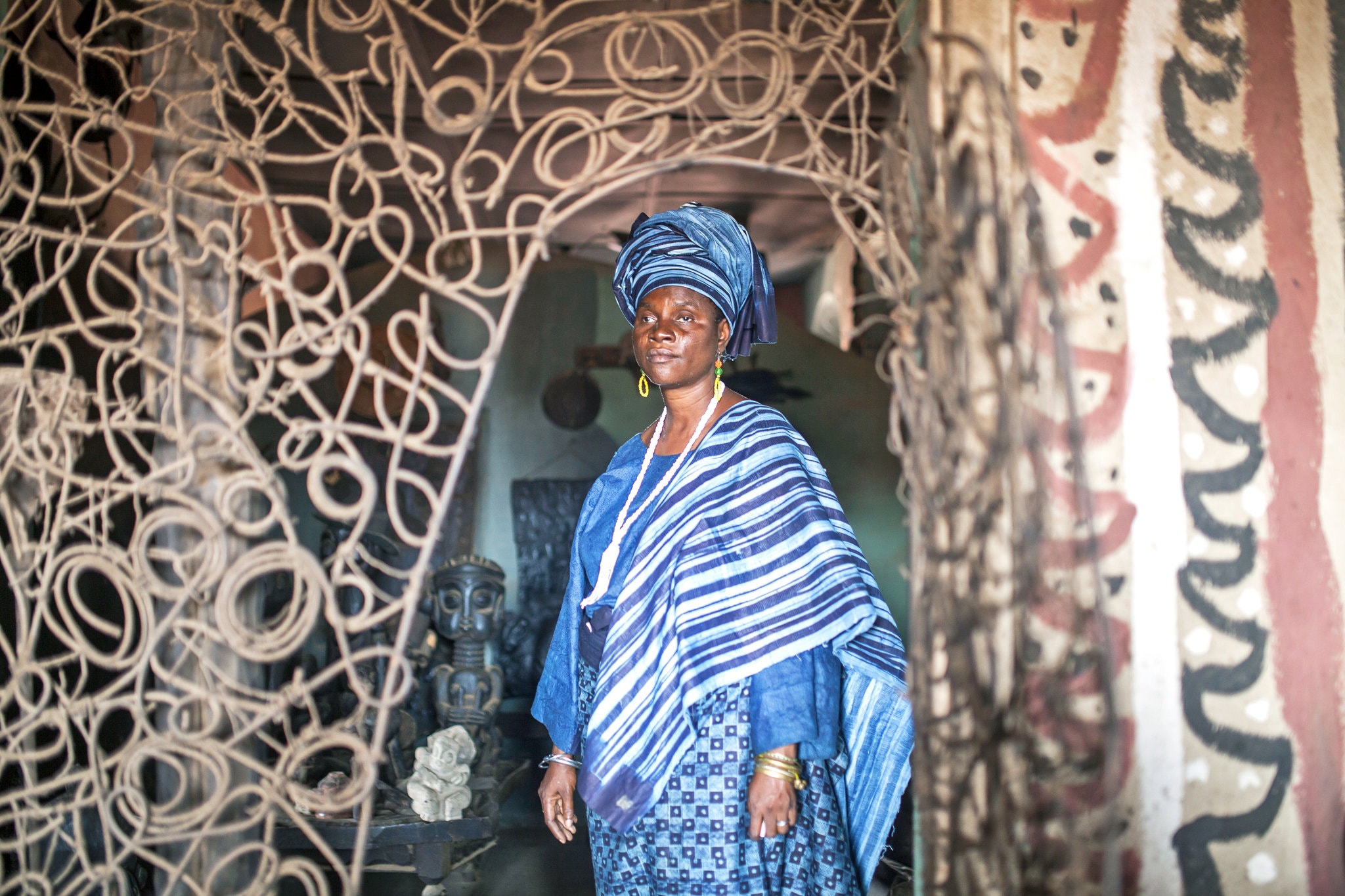The Graduate School of Design’s colloquium “Sacred Groves and Secret Parks” brought together scholars, architects, and practitioners to discuss the materiality and spatiality of Afro-religious diasporic practices, decentering Western canons of knowledge and new design possibilities for Brazilian and West African cities. Two of the key participants were Princess Adedoyin Talabi Faniyi and Moises Lino e Silva. Princess Faniyi is a Yoruba high priestess and the principal caretaker of The Adunni Olorisha Trust at the Osun-Osogbo Sacred Grove in Nigeria. The grove is famous for its incredibly lush lands and grand, artistic shrines, restored by Susanne Wenger and declared one of the two World Heritage sites in Nigeria by UNESCO in 2005. Lino e Silva is assistant professor of anthropological theory at the Federal University of Bahia and is an initiate of Candomblé (an Afro-Brazilian spiritual tradition) in Brazil. He met Princess Faniyi when he was initiated in the Yoruba tradition in Nigeria. Their research and partnership helped inspire the colloquium with the goal of expanding the international conversation to include an African spiritual perspective and informing future architectural practices. I spoke with Princess Faniyi, Lino e Silva, and Gareth Doherty, associate professor of landscape architecture at the GSD, about the cross over in their work and the themes of sacred spaces and architecture that were explored during the colloquium.
Princess Faniyi, your talk was “The Politics of Orishas: How Osun Saved the Grove,” referring to the goddess Osun, to whom the Osogbo Shrine is dedicated. How did the colloquium expand knowledge and conversation around African spiritual traditions in terms of designing and building in landscapes?
Princess Adedoyin Talabi Faniyi: The story of how the Osogbo sacred grove was made is that Osun told the people how to build on—and with—the land. The grove has preserved that land in a way that you do not often see. If there is more awareness in the preservation of the landscape of sacred groves, people can know the value of the land. And people will make the effort not to destroy the landscape that has been here for a long, long time—before the existence of any community. The spirit and the connection to the land is vital to the life of humanity.
Gareth Doherty: The conference was very much based on landscape architecture. For example, we looked at the redesigning of Brazilian terreiros [shrines/ritual spaces] from three different architectural perspectives. On one panel, a Brazilian architect—Vilma Patricia Santana Silva from the Federal University of Bahia—was an initiate of Candomblé. In the process of doing her master’s thesis, through each of the design stages, she would consult with the Orisha. In a sense, she was listening to the landscape. You could take that perspective a step further and say she’s listening to the spirit of the land through the Orisha. That challenges our preconceptions of how designers and architects go about designing.
In Nigeria, sacred groves have decreased in number, yet in Brazil, terreiros continue to multiply. What was the discussion surrounding sacred parks?
Moises Lino e Silva: Terreiros are growing in number. Some of them are very small, but officially there are eleven hundred—and unofficially there may be 2,000 in cities. It’s not just about a collection of buildings; it’s also the spaces in between the buildings that are public space. Sacred parks are within the infrastructure and the greener areas of their urban forests. What came up in the conference was the concern regarding not just the internal aspects of the terreiros but their relationship to the outside and to the public domain.
Princess Adedoyin Talabi Faniyi: The conference was crucial in raising awareness of the importance of the African spirit and Orisha tradition and the future of sacred spaces in these communities. With this partnership with Brazil and Nigeria, we are putting together a team so everyone can work together to preserve the landscape of sacred groves.
What was the conversation around environmental perspectives and the need to recover natural landscapes and preserve existing ones?
Princess Adedoyin Talabi Faniyi: There are major challenges in some places. UNESCO is there to protect the people and the places they are trying restore or preserve for sacred groves. My hope is that this conference will bring awareness and positive action with more ideas of how to protect and preserve the landscape.
Moises Lino e Silva: In Brazil, our organizations collectively advocate for the city and its ecological value. Part of our agenda is considering the preservation of those spaces within the cities, which are getting increasingly dense. Nature within the city and landscape is at the root of the spiritual traditions. I think that’s an important dimension to conserve.
Princess Adedoyin Talabi Faniyi: Sacred groves can be seen as a model for building in natural landscapes. So the example is the sacred groves and the connection to the Orisha and spirit of the land—but it needs to be a larger conversation. Every culture finds its own meaning and purpose in the land; and that also informs—and decides—the future of the landscape.
